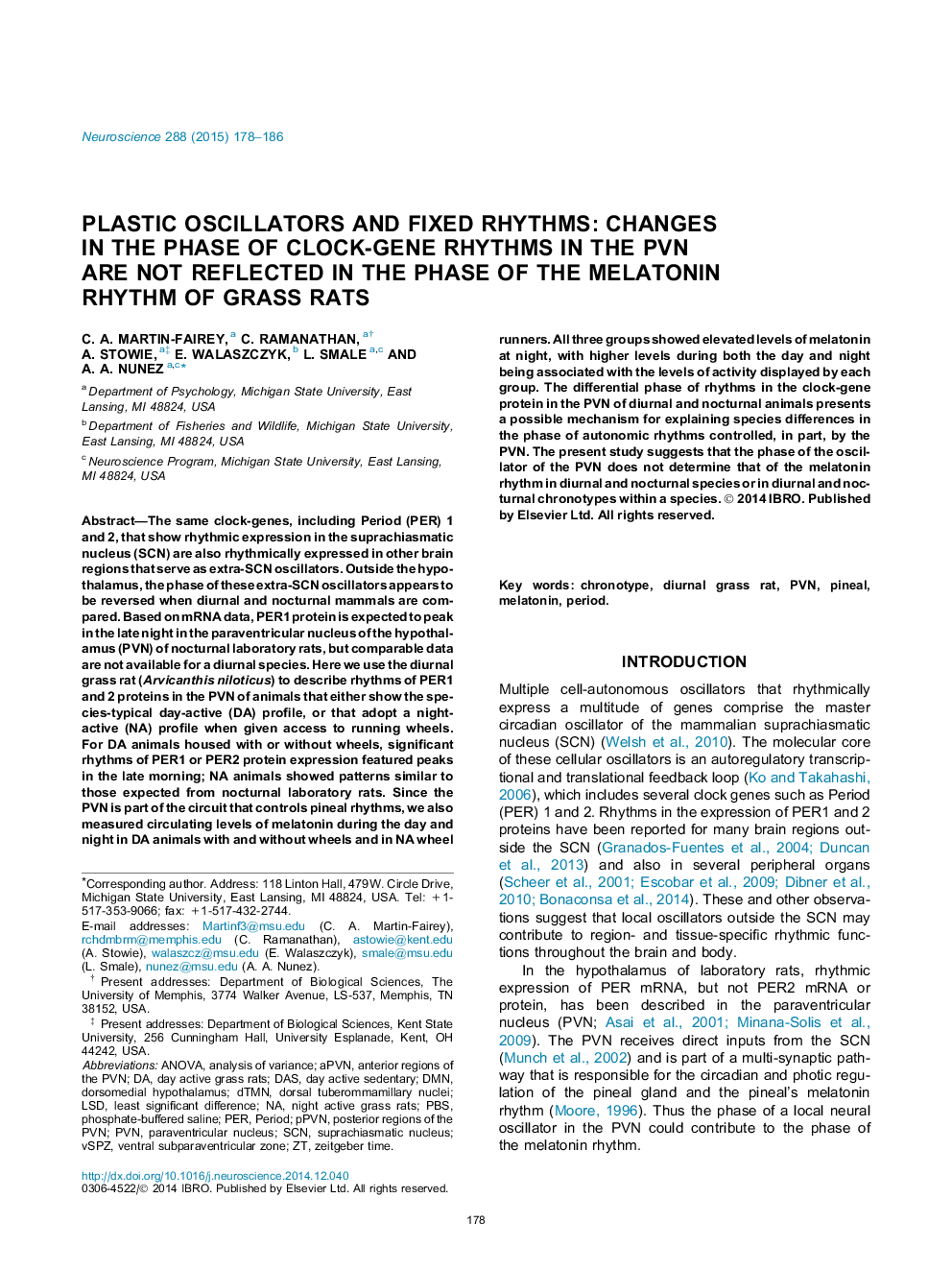| کد مقاله | کد نشریه | سال انتشار | مقاله انگلیسی | نسخه تمام متن |
|---|---|---|---|---|
| 4337502 | 1614788 | 2015 | 9 صفحه PDF | دانلود رایگان |

• PER protein in the PVN peaks in the morning in diurnal grass rats.
• PER protein in the PVN peaks in the night in night-active grass rats.
• Melatonin is elevated at night in both night- and day-active animals.
• Nocturnal activity in diurnal species appears to result in circadian asynchrony.
• The night-active grass rat is an attractive model of human shift-work.
The same clock-genes, including Period (PER) 1 and 2, that show rhythmic expression in the suprachiasmatic nucleus (SCN) are also rhythmically expressed in other brain regions that serve as extra-SCN oscillators. Outside the hypothalamus, the phase of these extra-SCN oscillators appears to be reversed when diurnal and nocturnal mammals are compared. Based on mRNA data, PER1 protein is expected to peak in the late night in the paraventricular nucleus of the hypothalamus (PVN) of nocturnal laboratory rats, but comparable data are not available for a diurnal species. Here we use the diurnal grass rat (Arvicanthis niloticus) to describe rhythms of PER1 and 2 proteins in the PVN of animals that either show the species-typical day-active (DA) profile, or that adopt a night-active (NA) profile when given access to running wheels. For DA animals housed with or without wheels, significant rhythms of PER1 or PER2 protein expression featured peaks in the late morning; NA animals showed patterns similar to those expected from nocturnal laboratory rats. Since the PVN is part of the circuit that controls pineal rhythms, we also measured circulating levels of melatonin during the day and night in DA animals with and without wheels and in NA wheel runners. All three groups showed elevated levels of melatonin at night, with higher levels during both the day and night being associated with the levels of activity displayed by each group. The differential phase of rhythms in the clock-gene protein in the PVN of diurnal and nocturnal animals presents a possible mechanism for explaining species differences in the phase of autonomic rhythms controlled, in part, by the PVN. The present study suggests that the phase of the oscillator of the PVN does not determine that of the melatonin rhythm in diurnal and nocturnal species or in diurnal and nocturnal chronotypes within a species.
Journal: Neuroscience - Volume 288, 12 March 2015, Pages 178–186